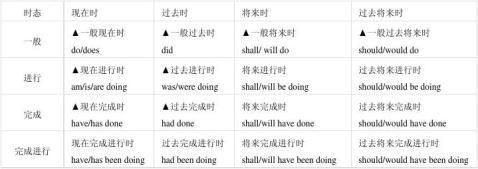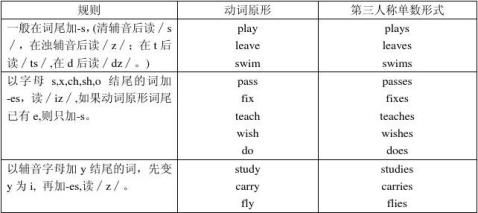一般现在时:表示目前经常性,习惯性,反复性的动作。
结构:主语是第三人称单数,谓语动词+s/es. 反之则谓语动词用原形。例如:I work / she works
标志词:sometimes, never, often, always,usually, on Sundays,every day, in the morning等。 例句:My father works everyday.
Does your father work everyday?
Yes,he does.
My father doesn't work everyday.
与 on Sunday 时态上的区别,是一个重点。
一般过去时:过去某个时间里发生的动作或状态.
结构: 1、am/is → was are → were
2、谓语动词用过去式,规则变化+ed
标志词:…ago, yesterday, the day before yesterday, last week(year, night, month…), in 20xx, just now, at the age of 5, one day, long long ago, once upon a time等。
例句 :He worked late yesterday.
Did he work late yesterday?No he didn’t.
He didn’t work late yesterday
一般将来时:1、表示某人打算、计划做某事。2、对将来的预测。结构:1、计划: 主+be going to +V原
2、预测: 主+ will + V原
标志词:tomorrow, the day after tomorrow ,nextday(week,month,year…),soon, in a few minutes(in +一段时间), from now on ,in the future等.
…… …… 余下全文







